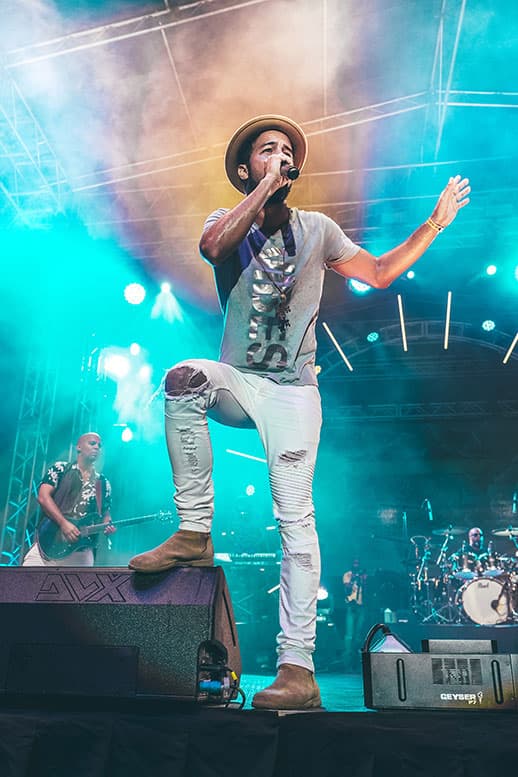This month, Florida hosted one of the largest edtech conferences in the US, FETC. FETC, or the Future of Education Technology Conference, is always in Florida, and is on a similar scale to ISTE and SXSW. This year, FETC was hosted at the Orange County Convention Center in Orlando, FL. Calling teachers from all over the world, this conference invites the edtech community to share best practices, talk about the latest trends, and give those of us in cold climates an excuse to go south.
 CodeJoy’s good friend, and micro:bit champion, Karie Huttner, went to FETC this year and is here to share her thoughts and reflection with all of you! Karie is a tech-savvy educator extraordinaire who's been revolutionizing classrooms for over two decades! With her dynamic approach to learning and dual master's degrees, Karie transforms students into active knowledge creators using cutting-edge tools like 3D printing and robotics. Her passion for edtech shines through in her legendary student showcases, where learners dazzle with their digital creations. When she's not inspiring students or leading makerspace initiatives, Karie's sharing her expertise with fellow educators – and you might recognize her as the friendly face providing tech support in CodeJoy courses! This bilingual innovator is always on the hunt for new ways to integrate technology and second language acquisition, making her a true champion of 21st-century learning. Whether in the physical classroom or the virtual realm, Karie's enthusiasm for education is simply contagious!
CodeJoy’s good friend, and micro:bit champion, Karie Huttner, went to FETC this year and is here to share her thoughts and reflection with all of you! Karie is a tech-savvy educator extraordinaire who's been revolutionizing classrooms for over two decades! With her dynamic approach to learning and dual master's degrees, Karie transforms students into active knowledge creators using cutting-edge tools like 3D printing and robotics. Her passion for edtech shines through in her legendary student showcases, where learners dazzle with their digital creations. When she's not inspiring students or leading makerspace initiatives, Karie's sharing her expertise with fellow educators – and you might recognize her as the friendly face providing tech support in CodeJoy courses! This bilingual innovator is always on the hunt for new ways to integrate technology and second language acquisition, making her a true champion of 21st-century learning. Whether in the physical classroom or the virtual realm, Karie's enthusiasm for education is simply contagious!
I sit here at my laptop after attending FETC 2025 and wondering, “where does one start,” “who is my audience,” and “what is my ultimate goal in what I write.” These are all key questions I also use to approach teaching and learning. I’d like to share how I sort through the information from conferences to bridge good ideas back into the classroom.
I have been fortunate enough to attend several FETC conferences prior to 2020 but this was the first time back. I am only able to attend conferences by presenting so that I can waive the fees of registration. Most conferences will give presenters a free registration. As a classroom teacher, I want to share what is happening in my classroom but also connect and learn with other educators. I have chosen to push outside of my comfort bubble, as an introvert, and into the realm of presenting. For this conference, I was selected to share in the Mega Share session! I would whole-heartedly encourage anyone who has never attended FETC and wants to, to submit a proposal to the Mega Share session.

What is a mega share session? It sounds a lot more intimidating than it actually is. A mega share session at FETC is a session where there are many round tables in the room where you are presenting to a small group of people for about 30 minutes. Participants then move to another presenter of their choice for 4 different rotations. This style of presentation allowed me to share what the people at my table were interested in, instead of creating a slideshow that may or may not actually reach the audience. In one session, I focused more on the Global Goals and how I introduce them to my students. In another session, I focused more on implementing the Global Goals through Design Thinking. In another session, I talked about the micro:bit and how my journey started with Infosys Foundation USA Pathfinders Institute and CodeJoy. Here is the Padlet of resources that I used to share my journey:
Karie Huttner Padlet Resources
 During these sessions, I benefited the most because it gave me the opportunity to make connections with other educators, as well as reinforce the importance of breaking the isolation that we all encounter in the classroom. I struggle with my own confidence in what I do with my students. Sharing what my students are doing helps me reflect even more on what I choose to focus on and celebrate with my designers.
During these sessions, I benefited the most because it gave me the opportunity to make connections with other educators, as well as reinforce the importance of breaking the isolation that we all encounter in the classroom. I struggle with my own confidence in what I do with my students. Sharing what my students are doing helps me reflect even more on what I choose to focus on and celebrate with my designers.
 One educator asked me a question that I too have struggled with when using design thinking, “What do you do when students are not creating something unique or innovative?” When I first started this journey with my students around a global goal, and using the design thinking process to use technology to respond to a community challenge, I too thought that it wasn’t enough to recreate someone else’s idea.
One educator asked me a question that I too have struggled with when using design thinking, “What do you do when students are not creating something unique or innovative?” When I first started this journey with my students around a global goal, and using the design thinking process to use technology to respond to a community challenge, I too thought that it wasn’t enough to recreate someone else’s idea.
And then, I remembered how difficult that journey into computer science was for me as an adult. How can I create something that I don’t even completely understand? Is there true harm in not creating a unique response to a challenge? Can learning and understanding happen by replicating someone else’s idea?
My answer at first was no. No, my designers/students need to create something unique, otherwise what is the point of this project? But my own biased understanding of how we make sense of the world, and what innovation is, quickly changed as I pushed out of my comfort zone and learned something new with CodeJoy during summer PD with Infosys Foundation USA Summer Pathfinders.
Every project will not be unique or innovative because it needs to be centered around the design team's own needs and experiences. For a team that has never used a specific technology, replicating a design can give the group a chance to ask powerful questions about the design. How was it created? Why was it created that way? And ultimately lead to the most powerful part of innovation - how could it be changed and will it be a better design?

Reflecting on FETC, I'm reminded of the power in sharing our classroom stories. The Mega Share format fostered deep, personalized discussions that truly enriched my teaching. Since returning, I've implemented ideas sparked by those conversations, particularly in design thinking and technology integration. I'm hoping to see my students grow more confident in tackling global challenges, realizing that innovation isn't always about creating something entirely new. To my fellow educators: take the leap and present at conferences like FETC. Your experiences are valuable, and sharing them benefits others while profoundly impacting your own teaching journey. Let's continue to break isolation, celebrate our students' achievements, and inspire each other to push the boundaries of what's possible in education.
Learn more about Karie in her blog and follow her on Bluesky and LinkedIn.
